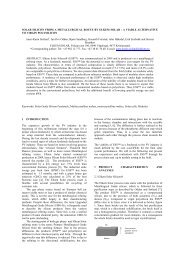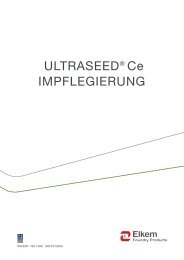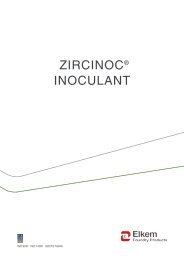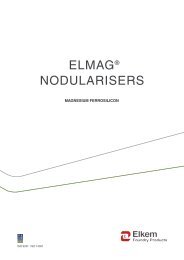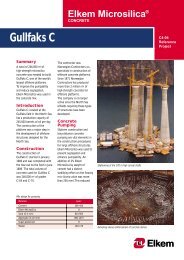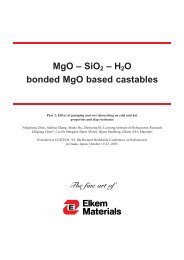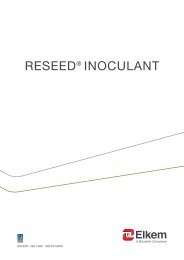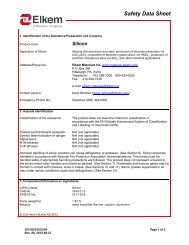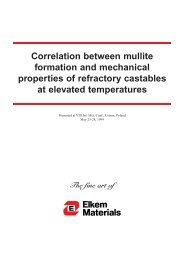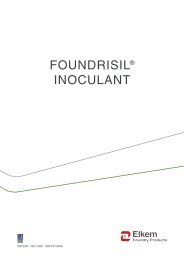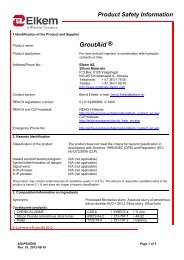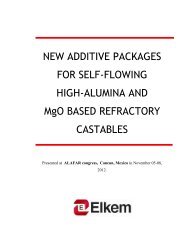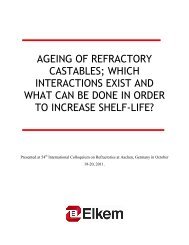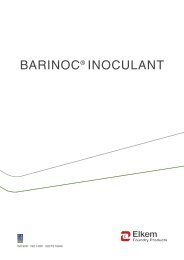Microsilica containing refractory castables - Elkem
Microsilica containing refractory castables - Elkem
Microsilica containing refractory castables - Elkem
You also want an ePaper? Increase the reach of your titles
YUMPU automatically turns print PDFs into web optimized ePapers that Google loves.
<strong>Microsilica</strong> <strong>containing</strong> <strong>refractory</strong> <strong>castables</strong> - the influence ofadditives on placing propertiesBjørn Myhre,<strong>Elkem</strong> Silicon Materials, P.O Box 8126 Vaagsbygd,4675 Kristiansand, Norway.bjorn.myhre@elkem.noAbstract:The surface of microsilica is covered by numeroussilanol groups that are able to dissociate in anaqueous medium. The dissociation is responsiblefor interactions in <strong>castables</strong> with microsilica andcement.When microsilica is used in <strong>castables</strong> suchinteractions are normally modified by use of asuitable additive. The additive disperses, but theamount and type may have side-effects that may notbe expected. Both set time as well as ageing of thecastable has been found very dependent on type andamount of additive. In this paper some of theinteractions in microsilica <strong>containing</strong> <strong>castables</strong> areshown and explained.Surface of <strong>Microsilica</strong>Although the overall composition of microsilica isSiO 2 , the surface of a microsilica particle is notplain siloxane bonds, but is also partiallyhydroxylated and hydrated. Producers of fumedsilica (particularly Evonik Degussa) have been veryactive in the characterisation and modification ofthe silica surface in order to tailor specificproperties of precipitated and fumed silica.In general, several connectivities of surface siliconhave been identified by means of FT-IR- and NMRspectroscopy,as shown in Figure 1.Figure 1. Surface Si connectivities idientified on silica.



